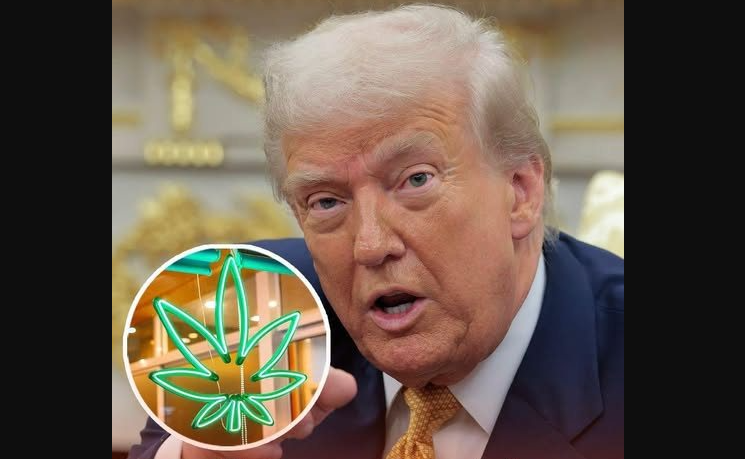The landscape of American drug policy now stands at a historic turning point, one that carries the potential to reshape the nation’s entire approach to cannabis and perhaps additional controlled substances in the years ahead. Over the past five decades, the federal scheduling system that governs enforcement priorities, criminal penalties, and scientific investigation has stayed remarkably rigid.
Today, a widening political agreement combined with shifting public perspectives points toward meaningful change on the horizon. An issue that once lingered on the edges of serious discussion has firmly entered the center of national conversation, mirroring a profound cultural and evidence-based evolution in how society views both the challenges and the advantages associated with cannabis.
Central to this emerging shift remains the critical matter of reclassification. Federal law continues to place cannabis in the Schedule I category of the Controlled Substances Act, a designation reserved for substances officials deem to possess high abuse potential while offering no currently accepted medical application.
This grouping aligns cannabis with compounds such as heroin and LSD. Numerous researchers, physicians, and policy experts maintain that evidence accumulated over recent decades clearly demonstrates therapeutic value in treating chronic pain, certain forms of epilepsy, anxiety disorders, and other conditions, rendering the present classification increasingly difficult to defend on scientific grounds.
The scheduling structure itself dates back to 1970 and organizes controlled substances across five distinct levels according to their relative risk of abuse, recognized medical utility, and safety profile when administered under professional supervision.
Schedule I imposes the strictest controls, blocking virtually all medical application and creating formidable barriers to research. Schedule V, by comparison, applies to compounds that present minimal dependency concerns. Because cannabis occupies the most restrictive tier, investigators encounter extensive regulatory hurdles before they can begin clinical studies, while healthcare providers and patients operate within a confusing patchwork of state and federal rules.
These scheduling decisions produce effects that reach well beyond university laboratories and medical journals. Across the country, dozens of states have established legal frameworks for medical or adult-use cannabis, generating thriving industries worth tens of billions of dollars annually—industries that function in direct conflict with continuing federal prohibition. This ongoing disconnect creates complications in banking access, tax collection, interstate transportation, workplace regulations, and many other areas.
Licensed cannabis companies often find themselves unable to open standard business accounts because financial institutions fear federal repercussions. Restrictions on moving products across state lines further limit the ability of producers to achieve economies of scale or maintain consistent quality standards for consumers.
The classification question also intersects directly with broader efforts to advance criminal justice reform. For generations, enforcement of cannabis prohibition resulted in arrest rates that fell disproportionately on communities of color, feeding cycles of incarceration, family disruption, and limited economic opportunity.
Moving cannabis to a less restrictive schedule—or ultimately removing it from the controlled-substances list entirely—could provide a meaningful pathway toward correcting those historical inequities. Supporters emphasize that updating federal policy would bring legislation into closer alignment with the clear preferences expressed by voters in state after state, while creating mechanisms to vacate old convictions and allow law enforcement agencies to focus resources on violent crime and public safety priorities.
Evidence of growing momentum appears on multiple fronts. Members of Congress from both major parties have introduced and co-sponsored reform legislation. Governors and state attorneys general regularly urge Washington to update outdated rules. Leading medical associations, research institutions, and patient advocacy groups continue to present data supporting reclassification.
Within the federal government itself, the Department of Health and Human Services has formally recommended transferring cannabis to Schedule III, a move that would officially recognize accepted medical uses and substantially ease research restrictions for the first time in half a century.
Should federal authorities implement reclassification, the ripple effects would touch nearly every corner of the cannabis ecosystem. Scientists would gain clearer pathways to conduct large-scale clinical trials. Patients in every state could benefit from more consistent access to doctor-recommended therapies.
Businesses would operate under fairer tax rules and gain entry to conventional financial services. Regulators could develop national standards rather than managing fifty separate state systems. Perhaps most importantly, the change would represent an official acknowledgment that public understanding of cannabis has matured dramatically since the 1970s.
For a country that has spent decades and hundreds of billions of dollars on an approach to drug policy often described as the War on Drugs, this development carries symbolic weight that extends far beyond any single plant. It signals a willingness to let evidence guide decisions, to correct past mistakes, and to build systems that reflect current knowledge and values. With public approval for legalization now consistently above sixty percent in national surveys and bipartisan coalitions strengthening in Congress, the United States approaches what may become the most significant overhaul of drug scheduling since the Controlled Substances Act became law. The decisions made in the coming months and years will influence public health, criminal justice, economic opportunity, and scientific progress for generations to come.





